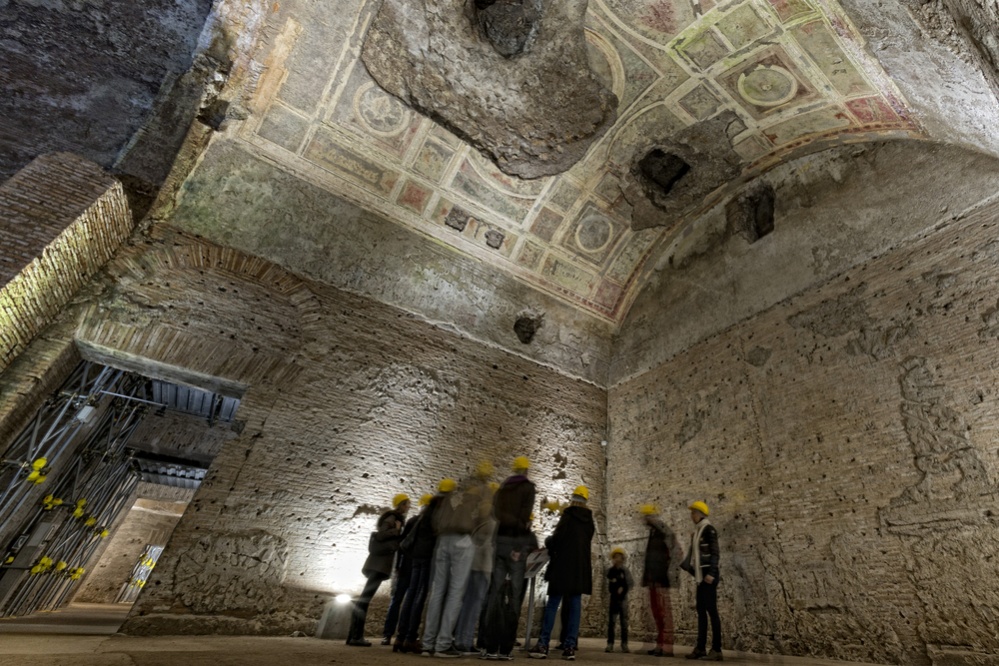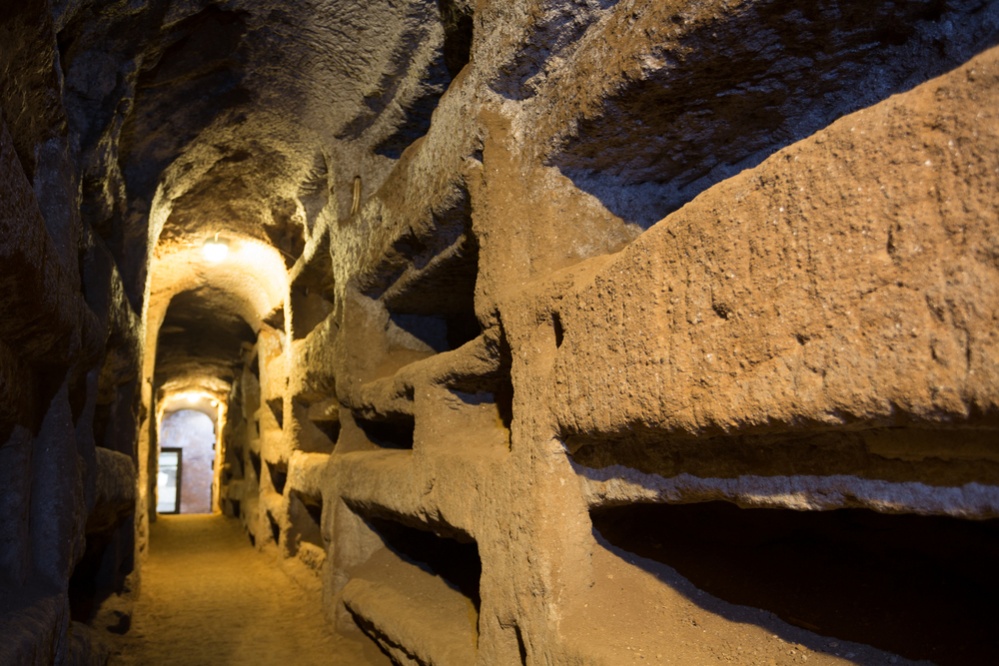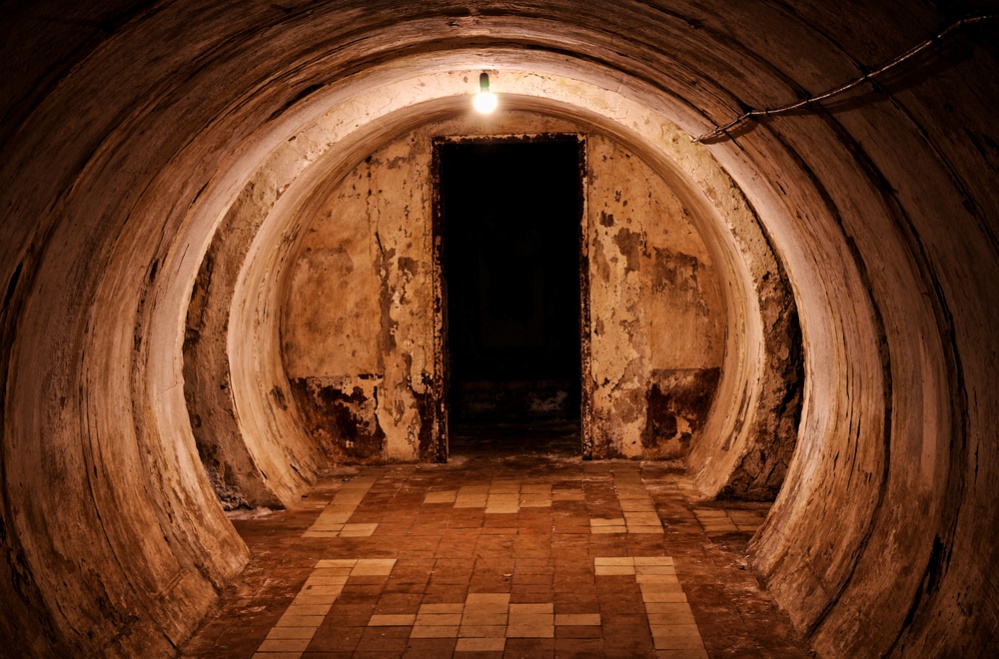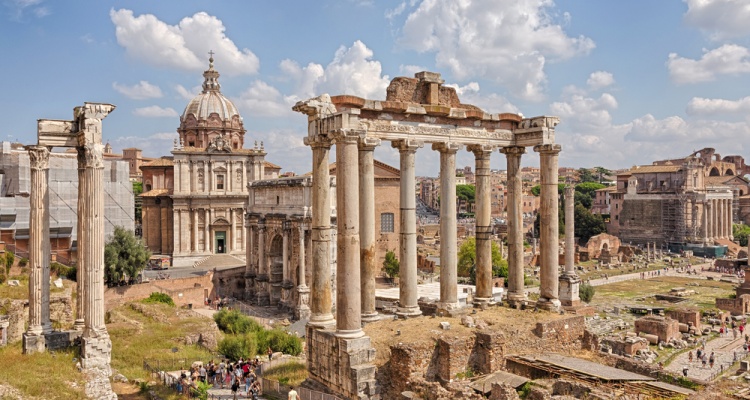As I wandered past the Coliseum with hordes of other travelers abuzz at Rome on the surface, I searched for the tiny opening to descend into Emperor’s Nero’s former palace, Domus Aurea. This was the sort of tour you must book far in advance, one you can only experience on the weekends and the sort of thing that requires a hardhat. I was about to descend into a Rome I hadn’t yet seen, the city’s underground.
Rome, the Eternal City, is not just best explored on the surface. Much of Rome’s makeup and history lurks below the cobblestone streets. With new and exciting discoveries made almost every in Rome, we have rounded up a few of the already unearthed underground attractions to visit while in the city.
Domus Aurea
One of Rome’s most exclusive underground attractions is easily Domus Aurea. Meaning, “House of Gold,” the enormous complex was created for Emperor Nero. Once loaded with precious marble, gold and gem adorned vaults, the palace spanned a third of the city in its heyday. Nero’s successors would fill the space with dirt and pillage it, leaving the palace hidden underground for centuries.
If you take a guided tour of Domus Aurea, you’ll be guided around by an archaeologist to gain a deeper understanding on how the complex was built, designed, appeared and how it is being excavated today. Running just over an hour, the tour showcases hidden frescoes and stuccoes, inviting your mind to run wild imagining what this underground portion of Rome will look like when it is fully excavated. The section that you can see today lies beneath Oppian Hill. Tours are only held on Saturdays and Sundays as restoration work is ongoing. And since restoration is a work in progress, you’ll be given a hardhat to wear throughout the tour.

Basilica San Clemente
After a few days spent popping in church after church in Rome, they can all start to look the same. If you want to dig a bit deeper into Rome’s churches, head to Basilica San Clemente. The 12th-century church is mostly known for its Apse Mosaic of Jesus. However, what many don’t realize is that the church is actually similar to that of a layer cake. Beneath the basilica is a fourth-century church built on top of a second-century pagan temple built on top of a first-century house. You can explore all of these layers of history on your own. No one knew they existed until Father Joseph Mullooly went poking around the foundation in 1857 and discovered the church’s many layers.
Via Appia Antica Catacombs
You can’t experience underground Rome without a visit to one its catacombs. The city boasts some of the oldest and longest burial underground tunnels in the world. Hundreds of kilometers of catacombs run throughout the city and its outskirts. While not all of the catacombs have been unearthed or allow visitors, the catacombs along the Via Appia Antica are easily the most famous underground burial tunnels in the city. Used as a burial place for early Christians and pagans, the two major Christian catacombs in this area with underground tours offered are the Catacombs of San Sebastiano and the Catacombs of San Callisto. Many of the first Christians buried in these catacombs were later declared martyrs and saints.

Domus Romane di Palazzo Valentini
If your imagination is not enough to help you picture Rome’s Domus Aurea, head instead for what lies beneath Palazzo Valentini. The 20,000 square-foot complex has two fourth-century A.D. patrician villas and remains of a private thermal bath. The ruins showcase the lives of powerful families in ancient Rome. Littered with mosaics and wall decorations, Domus Romane di Palazzo Valentini has also added virtual reconstruction to heighten your imagination. The ruins come to life through lighting recreating what it would have looked like and voice-overs as you wander room to room.
Mussolini’s Underground Bunker
While Mussolini always put down the thought of ever retreating to a bunker, he certainly had one lurking under the 19th-century Villa Torlonia. Mussolini and his family lived in the villa from 1925 to 1943. By 1940, the Italian dictator carved out his own underground bunker with four meter-thick walls. Spanning more than 2,000 square feet, the secret World War II bunker was largely kept a secret in Rome until 2014 when it was opened up for tours. You can explore the underground bunker with its anti-gas doors and air filtration systems, all designed to keep Mussolini safe from possible air raids and gas attacks.

[perfectpullquote align=”full” cite=”” link=”” color=”” class=”” size=””]Have you explored some of Rome’s underground attractions? Share your favorite underground tour of Rome with us in the comments below.[/perfectpullquote]

